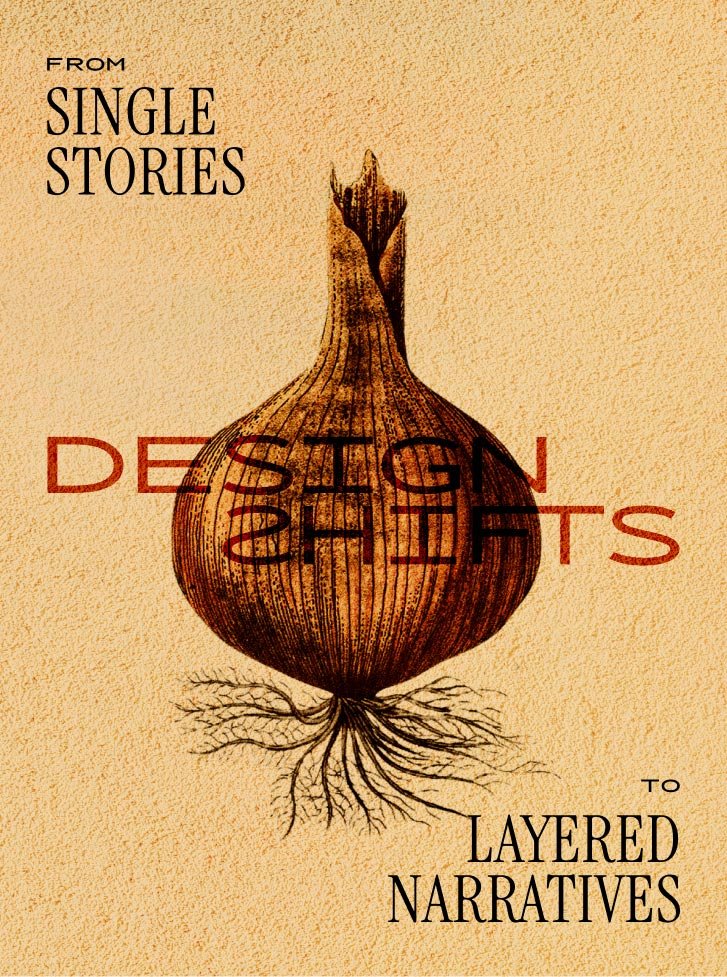DesignShift: From Single Stories to Layered Narratives
People are like onions. We have layers. (And we can all make people cry.)
Humans (and organizations) are not simple, targeted, linear, or one-dimensional. We're layered, complex, confusing, and our depth and breadth shouldn't be confined to a one-minute elevator ride. Yet, we live in a world obsessed with packaging people into consumable niches, pushing out short-form content, and making decisions based on simplified stereotypes.
In design, this shows up in the way we craft personas, design simple icons, or try to summarize things on simple Post-it notes.
DesignShift: How can we shift design practices away from reductive single stories toward more nuanced, layered narratives?
In her TED Talk, The danger of a single story, the novelist Chimamanda Ngozi Adichie, explains the problem of a single story both for the individual and our society as a whole. “The single story creates stereotypes, and the problem with stereotypes is not that they are untrue, but that they are incomplete. They make one story become the only story.”
True layered thinking means recognizing that each person exists at a unique intersection of experiences, privileges, and marginalizations. It means seeing the interconnection of the problems we face, and it requires us to tell stories that shows realities beyond the outer layer.
This isn't about making design more complicated—it's about making it more human. Embracing layers leads to more authentic, ethical, and meaningful design.

